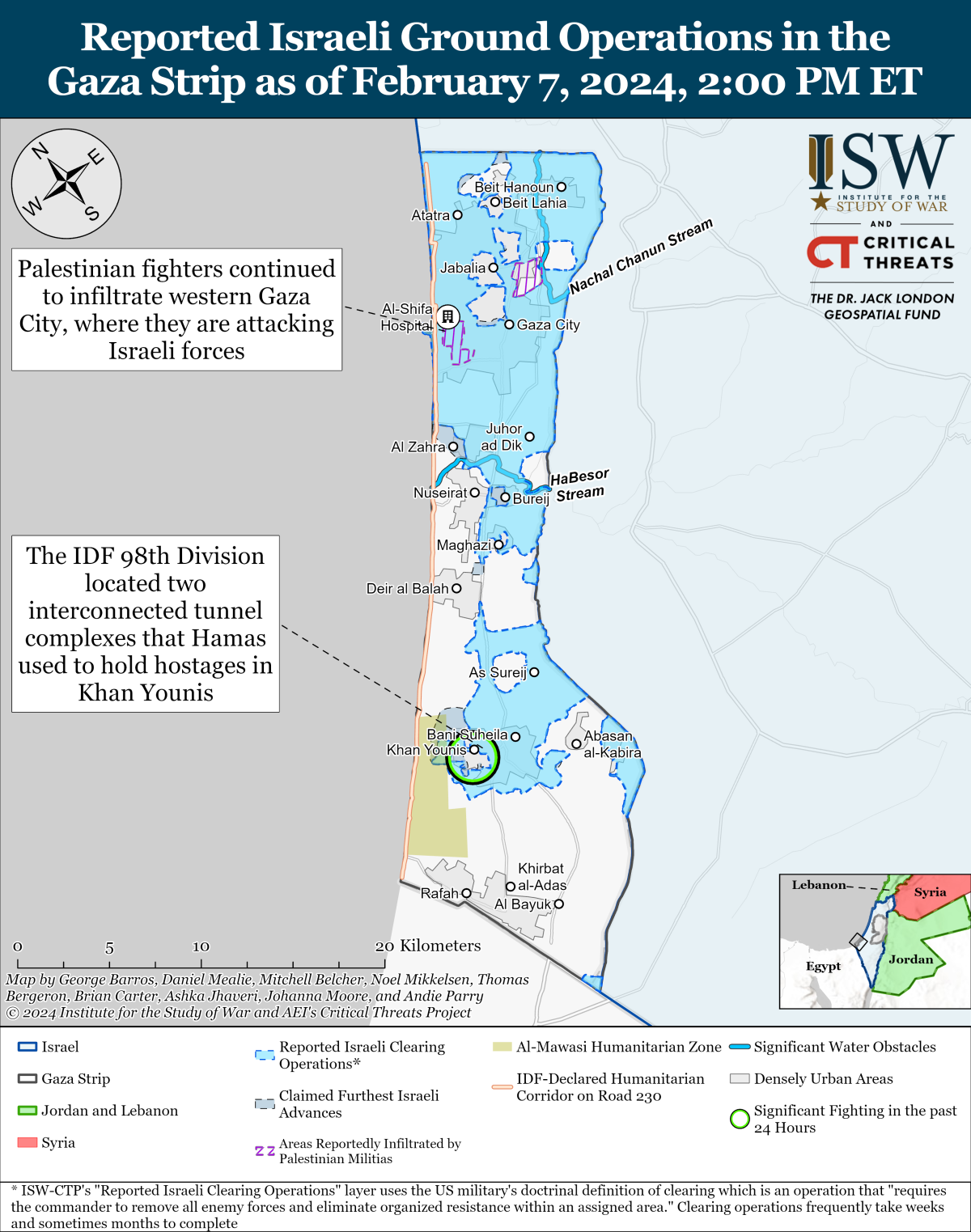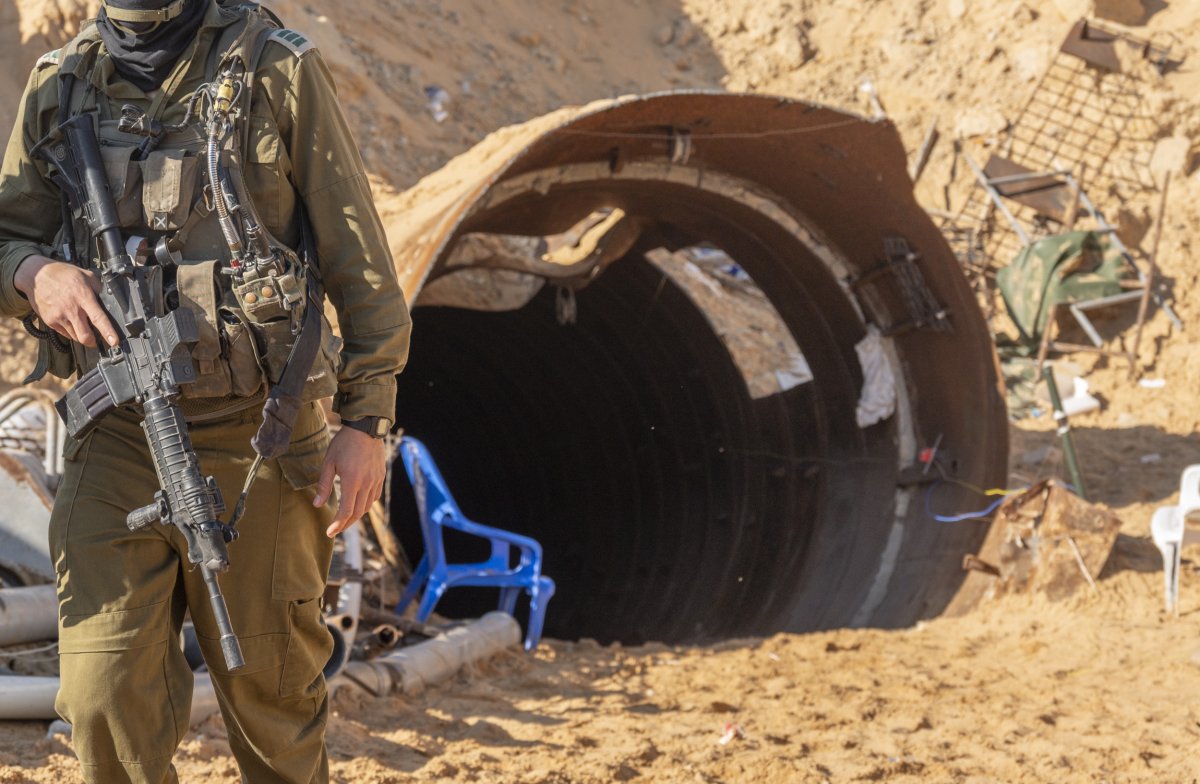David Brennan
Israeli forces are continuing their hunt for Hamas' sprawling tunnel network—highlighted on a think tank's new map of the conflict—under the devastated Gaza Strip as talks on a fresh ceasefire agreement progress under American guidance.
As in previous rounds of conflict, the Israel Defense Forces (IDF) have made the militant tunnel network—which is believed to stretch for hundreds of miles under Gaza—a prime objective given its strategic importance to the smuggling and military operations of Palestinian resistance factions.
On Wednesday, the IDF revealed a significant tunnel complex which it said had been used to hold 12 of those taken hostage during Hamas' October 7 infiltration attack, during which some 1,200 people were killed and hundreds abducted back into the Strip.
The IDF said it was built "in the heart of a civilian area in Khan Younis" and had previously been used by Hamas leaders. The IDF believes the Islamist group's Gaza chief Yahya Sinwar is still hiding below the streets of the southern city, which has been a recent focus of the fighting.

This map published by the Institute for the Study of War on shows the battlefield situation in the Gaza Strip as of February 7, 2024.
The sophisticated underground complexes have traditionally been used to house leaders in relative safety, store militant weapons caches, launch attacks into Israel, and smuggle weapons and other equipment into the blockaded coastal Strip.
Israeli forces have been using a variety of methods to locate and destroy the tunnels, even including pumping water from the Mediterranean to flood the passages.
The Israeli offensive on Gaza has killed more than 27,000 Palestinians, per figures published Thursday by the Associated Press.
Most Gazans have been displaced from their homes amid the devastating fighting, with many having since gathered at the southern Rafah crossing on the Egyptian border. The Rafah area has already been hit by multiple airstrikes, and the spread of ground operations to the frontier settlement could be "catastrophic," volunteer doctors have told Newsweek.
The Institute for the Study of War's new map of the conflict battle zone, published on Wednesday, indicated continued fighting in both Khan Younis and the northern Gaza City, which was the main objective of the initial Israeli push into the Strip late last year. "Palestinian fighters continued to infiltrate western Gaza City, where they are attacking Israeli forces," the think tank wrote.

An Israeli soldier exits a tunnel that Hamas reportedly used on October 7 to attack Israel through the Erez border crossing, on January 7, 2024 in the northern Gaza Strip. Israeli forces are prioritizing search.
The objectives of Hamas and other militant groups remain to "erode the will of the Israeli political establishment and public to launch and sustain a major ground operation into the Gaza Strip," and to "degrade IDF material and morale around the Gaza Strip," the ISW said.
The Islamist group this week proposed a new ceasefire deal in which it would stagger the release of the remaining hostages over four-and-a-half months in exchange for an Israeli military withdrawal from Gaza and the release of Palestinian prisoners. Israeli Prime Minister Benjamin Netanyahu dismissed the proposal on Thursday as "delusional."
No comments:
Post a Comment